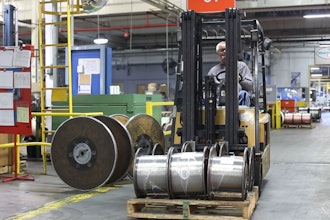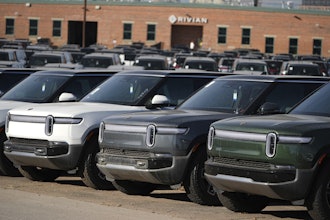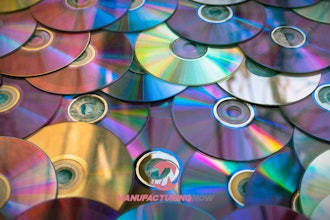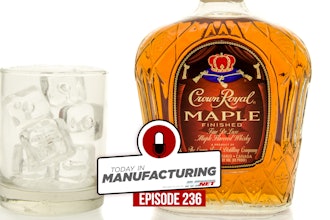WHITE PAPER
Page 1 of 9 © 2017 Lubrication Engineers, Inc.
Lubricants Can’t Be Green …
Can They?
By John Sander, Vice President of Technology, Lubrication Engineers, Inc.
Introduction
Today, many want to “go green” in various aspects of their lives. The question is what does this mean? It is
typically meant to be a business or lifestyle choice to act in environmentally friendly ways. Is “green” a
legitimate term or is it just marketing fluff meant to sell product, promote a company, or make us feel
good? The answers to this question can vary from person to person, business to business, and even
government to government. Common terms that have been used to define something
as green include: renewable, recyclable, reusable, nontoxic or less toxic, energy
conserving, and waste reducing.
The goal of this paper is to show that an unlikely industry – lubrication – can be very
green through responsibly planned purchasing, storage, use and disposal; and to
challenge the limited regulatory view of green lubricants that fails to consider longer
lubricant and component life, and decreased energy use.
The lubricants industry is part of the much larger petroleum industry. In the aftermath of catastrophic
accidents, such as the Deepwater Horizon explosion in the Gulf of Mexico and the grounding of the Exxon
Valdez near Alaska, both of which resulted in high profile ecological damage caused by huge amounts of
crude oil being spilled into the environment, petroleum has developed a reputation as being a dirty
industry. Incidences such as these are evidence that some organizations in the exploration, production and
transportation segments of the petroleum industry have contributed to that negative reputation and
continue to have their challenges, but the entire petroleum industry should not be found guilty by
association. In fact, this industry has made possible many of the products that are responsible for the
quality of life enjoyed by increasing numbers of people around the world.
Green Definitions
The term “green” has various synonyms: environmentally friendly, environmentally acceptable, and
sustainable, just to name a few. Most of the terms used over the years have involved how something we do
(or use) affects the natural environment in which we live, including air, water, soil and the natural
organisms that live in them. The goal of green initiatives is to conserve resources, produce less waste, and
minimize pollution. Today many organizations are embracing “sustainability” as the best way to describe
these initiatives.
The U.S. Environmental Protection Agency provides this explanation: “Sustainability is important to making
sure that we have and will continue to have, the water, materials, and resources to protect human health
and our environment” [1]. The United Nations hosted the 2005 World Summit, during which it was noted
that sustainability requires the reconciliation of environmental, social equity and economic demands, called
the “three pillars” of sustainability as shown in Fig. 1. [3] This Venn diagram of sustainability indicates that
the three pillars are not mutually exclusive and can be mutually reinforcing. Although this description of
sustainability is not universally accepted, it has become by many organizations and governments.
LE WHITE PAPER
Green Lubricants
Page 2 of 9 © 2017 Lubrication Engineers, Inc.
The chemical industry was ahead of the game. The industry actually began to consider environmental issues
along with economic issues prior to the U.N.’s 2005 World Summit. Early in the summer of 1997, the
Chemical Manufacturers
Association, American Chemical
Society, the U.S. EPA, and various
other groups sponsored the first
Green Chemistry and Engineering
Conference in Washington, D.C.
Paul Anderson, president of ACS at
that time, said that green chemistry
“challenges us to look at the entire
life cycle of chemical production to
create new ways to more efficiently
produce useful products with less
waste – or preferably no waste.”
Per Paul Tebo, then vice president
for safety, health and environment
at DuPont, said that green
chemistry will focus on the following:
• Reducing emissions and waste with goal of zero emissions
• Efficiency in use of materials, energy and water, including substantial use of recycled and reused
materials and growing reliance on renewable resources
• Inherently safer processes, distribution and products
• Reducing total system impact through tools such as life-cycle assessment
• Creating significant customer and societal value per unit of resources extracted
• Creating significant shareholder value [2]
Contrary to popular belief, most lubricants – when properly used – could be considered environmentally
considerate. Why? Lubricants reduce friction, which results in a reduction of energy consumption and
increased equipment life. A properly formulated lubricant lasts longer, therefore generating less waste. The
end users, original equipment manufacturers and government agencies still expect this performance, but
are now also requesting low impact if the lubricant is released into the environment. During the vehicle
design process, for example, lubricant formulations are being specified that will reduce engine emissions in
vehicles with internal combustion engines.
Lubricants today can be formulated using high-performance biobased materials and meet the more
traditional definitions of environmentally friendly, such as being biodegradable, low toxicity and non
bioaccumulative. The remainder of this paper will point out various ways that lubricants can be green.
Lubricant Formulation
Traditionally, when a lubricant was formulated, it contained a mixture of two main ingredients: oil and
additives. For grease, a third ingredient was added – a thickener. In modern times, formulation still follows
this basic mixture, but within that the options have expanded dramatically, as many types of natural and
synthetic base fluids can be used as the base of a lubricant, not just petroleum oil. Additives are included to
FIG. 1 | Venn Diagram of Sustainable Development:
at the Confluence of Three Constituent Parts [3]
LE WHITE PAPER
Green Lubricants
Page 3 of 9 © 2017 Lubrication Engineers, Inc.
impart beneficial performance attributes, such as reduced friction (wear prevention), corrosion protection,
heat removal (oxidation resistance), foam and air release, and water separation or emulsion, just to name a
few. Table 1 illustrates four key areas that formulators must consider when formulating products:
environmental,
performance, physical
and commercial.
The primary attribute
desired by most end
users from their
lubricant is that it
protects their asset
from wear; therefore,
increasing the asset’s
reliability and useful
lifespan. For many
regulators, the primary
concern is that the
lubricant be
environmentally
friendly. For these agencies, lubricating properties are secondary, if considered at all. One of the first
government regulations that directly affects lubricants is the U.S. EPA’s 2013 Vessel General Permit
amendment made to the National Pollution Discharge and Emission System rules of the Clean Water Act.
The basis of this regulation is that all vessels greater than 79 feet long must use environmentally acceptable
lubricants in all oil-to-sea interfaces, unless technically infeasible.
By the EPA’s description, environmentally acceptable lubricants are biodegradable, minimally toxic and not
bioaccumulative. The VGP went into effect Dec. 19, 2013. [4] This regulation provides no regulatory
requirements for lubrication performance. It only regulates the three properties mentioned.
Yet, lubricants can be green in many ways that still consider performance, more in line with companies’
aims in pursuit of sustainability. It’s time to look at the more holistic view of green lubricants.
Holistic View of Green Lubricants
The traditional environmental lubricant has been one that has been either proven to be biodegradable or is
formulated from biobased materials. Yet, from a more holistic standpoint, lubricants have been
environmentally friendly in another way for years. If the proper product formulated for an application is
chosen, it can improve equipment efficiency. As compared to the lubricants even 50 years ago, today’s
lubricants can be formulated to provide a much higher level of equipment protection and performance. If
the sustainability model of green is considered, they can be more environmentally friendly, provide better
performance, and improve the economic bottom line. Let’s look at some ways lubricants can be green.
Renewable
Petroleum crude oil has long been thought of as a non-renewable natural resource. It is formed deep within
the stratified rock that is part of the earth’s crust. Crude oil is located and extracted from the rock and
refined into many materials, including mineral lubricating oils. Technically, natural process could create
more oil, but not within the lifetime of anybody currently living, thus for practical purposes it is a limited
TABLE 1 | Planning Consideration Areas
Environmental Performance Physical Commercial
Ecotoxicity Compatibility State Marketability
Biodegradability Wear Reduction Rheology Packaging
Bioaccumulation Oxidation Tackiness Storage
Renewable Corrosion Odor Disposal
Recyclable Water Separation Volatility Personnel
Foaming Color Cost/Price
LE WHITE PAPER
Green Lubricants
Page 4 of 9 © 2017 Lubrication Engineers, Inc.
resource that will eventually run out. For many years, doomsayers have pronounced the impending end of
petroleum crude oil. In 2014, BP estimated that we had 53 years’ worth of oil left in the ground if we
continued with current production and usage rates. [5]
Through improved exploration techniques,
increased use of hydraulic fracturing, and
enhanced recovery processes; this number has
increased over the years, even though world
population continues to grow. In addition, efforts
have been made to produce oil from renewable
vegetable, animal and algae sources – canola,
soybeans and cattle, to name a few. These efforts
represent a return to the lubricants used by
humans long before petroleum crude was found
and refined. These sources are considered
renewable, because they come from live
organisms. Petroleum oil took millions of years to
form in the ground. Renewable products grow, are
harvested, and are turned into products within a
relatively short time.
Most oils taken directly from animal and vegetable
sources, however, do not yield stable lubricants. It
is this instability that makes them highly
biodegradable, an environmental advantage. Much
research has been conducted on renewable oils
since the late 1980s; through genetic modifications
and chemical processing, some of their
insufficiencies are being overcome. Unfortunately,
this usually results in base fluids that that can be
more expensive than mineral oils.
Biodegradable, Low Ecotoxicity, Non Bioaccumulative
Early environmentally acceptable lubricants were made from biobased materials or were biodegradable;
most were formulated using vegetable oil based fluids. Concessions often had to be made by the users
when putting these products into service. They typically would become jelly-like at low temperatures and
oxidize rapidly at operating temperatures. They were also more expensive than their mineral oil
counterparts. This meant that for a user to employ green lubricants they had to pay more for a product that
didn’t perform as well. There were not many laws in place forcing users to buy them, so only hardcore
environmentalists used them.
Governments are beginning to put more emphasis on EALs by enacting laws, such as the U.S. EPA VGP laws,
making it more difficult for companies to avoid using them. Fortunately, many options are available today
through genetically improved vegetable oils or high-performance synthetic fluids, so that higher performing
products can be formulated to overcome the low- and high-temperature concerns of the early products.
Along with biodegradability, toxicology has become part of the requirement for a lubricant to be green,
meaning that formulators now must also consider ecotoxicity and bioaccumulation.
Canola Field in Denmark
Cattle Ranch in Montana
LE WHITE PAPER
Green Lubricants
Page 5 of 9 © 2017 Lubrication Engineers, Inc.
Government laws, such as the EPA VGP, set forth quantifiable requirements to show that a lubricant is an
EAL. While the VGP is a self-certifying program, there are also marketing based approvals, such as the
European Union’s Ecolabel, that include specific test requirements, product formula audits, and fees paid
for registration and use of their approval logo. These approvals do not place any requirements on
lubrication performance, however, just on biodegradability, toxicity and bioaccumulation. The typical tests
for evaluating lubricants and lubricant ingredients for these three properties are listed in Table 2 [6] [7],
followed by a summary of the requirements for each.
TABLE 2 | Common Consideration Standards for Lubricants
Biodegradability Toxicity Bioaccumulation
ASTM D6006: Assessing
Biodegradability of Hydraulic Fluids
ASTM D6081: Aquatic Toxicity
Testing
OECD 107: Partition Coefficient,
Shake Flask Method
ASTM D5864: Determining Aerobic
Aquatic Biodegradation / OECD 301B:
Freshwater Modified Sturm Test
OECD 201: Freshwater Alga and
Cyanobacteria, Growth Inhibition
Test
OECD 117: Partition Coefficient,
HPLC Method
ASTM D6139: Determining Aerobic
Aquatic Biodegradation, Gledhill Shake
Flask / OECD 301D: Freshwater Closed
Bottle Test
OECD 202: Daphnia sp., Acute
Immobilization and Reproduction
Test
ASTM D6731: Determining Aerobic,
Aquatic Biodegradability, Closed
Respirometer / OECD 301E: Modified
Biodegradation Test
OECD 203: Fish, Acute Toxicity Test
ASTMD7373: Predicting
Biodegradability, Biokinetic Model
OECD 210: Fish, Early-Life Stage
Toxicity Test
OECD 301C: Modified MITI Test OECD 211: Daphnia Magna
Reproduction Test
Note: ASTM standards [10] and OECD Tests [11] used as references.
Biodegradability
Biodegradability is a
measure of the
persistence, or breakdown
rate, of a substance
through biological action
while in the natural
environment. Most of the
tests listed in Table 2
evaluate biodegradability
through the conversion of
the lubricant from a
hydrocarbon to a more
basic molecule, carbon
dioxide, through
metabolism and
respiration of
microorganisms, such as bacteria.
Biodegradability ©Lubrication Engineers, Inc.
LE WHITE PAPER
Green Lubricants
Page 6 of 9 © 2017 Lubrication Engineers, Inc.
Biodegradable products are identified as readily or inherently
biodegradable. This is determined by the percentage with which
they biodegrade to their natural state, when subjected to
sunlight, water and microbial activity, in 28 days. Products are
considered “readily biodegradable” if they biodegrade
anywhere from 60-100 percent. “Inherently biodegradable”
products are those that will biodegrade from 20-60 percent. [8]
Ecotoxicity
Ecotoxicity is a measure of the toxicity of a chemical substance
to organisms in the environment. The tests listed in Table 2
employ species that are used to provide indications of whether
a chemical is either acutely or chronically toxic to the
environment. Although this list contains almost exclusively
marine organisms, there are also tests that use plants, bacteria
and various other organisms. Frequently, the result will be presented as an EC (effective concentration)
value or LC (lethal concentration) value.
Bioaccumulation
Bioaccumulation is a process through which chemicals are taken up by organisms either directly from
exposure to a contaminated environment or by consumption of food containing the chemical. For
bioaccumulative compounds, the principal route of movement into and through aquatic food webs appears
to be dietary ingestion rather than bioconcentration from water because these compounds generally
exhibit low water solubility and tend to concentrate in the lipid fractions of biological tissues. [6] Therefore,
the tests evaluate the partition coefficient, or the tendency of a compound to separate from water.
Typically, materials are evaluated for separation into octanol or water. The ones that prefer octanol could
accumulate in the fat of organisms and bioaccumulate.
Bioaccumulation ©Lubrication Engineers, Inc.
Daphnia (water flea), as used in OECD
ecotoxicity testing.
LE WHITE PAPER
Green Lubricants
Page 7 of 9 © 2017 Lubrication Engineers, Inc.
Cradle to Grave, Cradle to Cradle
When the environmental movement began, many people wanted to see producers
of materials, such as lubricants, be responsible for them from “cradle to grave,” or
from inception through use and disposal. In 2002, scientist Dr. Michael Braungart
and architect William McDonough published their book Cradle to Cradle: Remaking
the Way We Make Things, which called for a transformation of human industry
through ecologically intelligent design. [9] They suggested that the things we use
must be designed in an ecologically sustainable manner creating what could be
considered a circular product life cycle. Two ways to accomplish this are reuse and
recycling.
For convenience, many things made today are disposable. They are used once or
twice and then thrown away. This means that they end up in a disposal resting
place, such as a landfill, or irresponsibly tossed aside as pollution. Most lubricants
are liquid-based; they are sometimes poured out and seep into soil or water, which
contaminates a natural resource that we need to live. Any effort to reuse or recycle lubricants is green.
Reuse
Some lubricant packaging, such as steel drums and bulk transfer tanks, can be emptied, sent back,
refurbished and refilled with new lubricants or other chemicals. However, most lubricants cannot be reused
because of degradation and contamination. Some end users have tried to reuse lubricants with limited
success. For example, used lubricants are sometimes applied to moving chains. This is not considered a best
lubrication practice but success varies depending upon condition of the used lubricant. Another reuse for
lubricants is that they are collected and burned as heating fuel oil. The fuel is needed as an energy source,
so this approach is more green than dumping into a landfill or pouring into the environment.
Recycling
An entire new segment of the lubricants industry exists called re-refiners. In the infancy of re-refining,
waste oil collectors would take spent lubricant back to their facility, remove the water, filter out the solids,
and resell it for various lubrication uses. Modern re-refiners collect the used lubricant, take it to their
facility, remove water and solids, but then – unlike their predecessors – they introduce it into a refinery
process just like crude oil. After processing, new high-quality base oils are produced that have been found
to be of equal or better quality to virgin base oils. These can be used to produce new lubricants, starting the
process over. This has been called a “closed loop” process. [10]
Resource Conserving
Yet another way things can be considered green is that they reduce the amount of natural resources that
must be used to produce them. There are various ways this can be achieved when using lubricants. One of
the main purposes of lubricants is to reduce friction, which minimizes equipment wear. Laws of physics can
be used to show that two surfaces with a lower coefficient of friction run more efficiently and consume less
power. Power consumption can be measured in several ways, including fuel economy, electrical
consumption or productivity (units/hour or similar).
These efforts can be converted into monetary figures, meaning that they can create economic benefits in
addition to the environmental benefits of using fewer resources. Occasionally, it can even be shown that
the money saved is more than the amount that may have been spent on a more expensive lubricant or a
lubricant that needed to be changed more frequently. [11]
Cradle to Cradle by
Braungart & McDonough
LE WHITE PAPER
Green Lubricants
Page 8 of 9 © 2017 Lubrication Engineers, Inc.
Because of concerns with climate change, an important initiative pursued by many of the world’s
governments is to reduce greenhouse gas emissions. Power plants, businesses and individuals are inspired
to reduce their carbon footprint. As an example of how this affects engine oils, the most recent diesel and
gasoline engine emission regulations have included requirements for fuel economy improvements as a
means of reducing carbon dioxide emissions. Aside from vehicle aerodynamics and engine upgrades, engine
lubricants were also affected. OEMs have begun to require decreases in viscosity grade recommendations
without sacrificing engine durability. Certain engine oil ingredient levels are regulated so that they do not
negatively impact vehicle emission system equipment. Aside from reducing environmental impact, the
lubricants are being required to protect the physical assets, making them last longer.
In addition to extending the life of the asset, the lubricant itself can be formulated to last longer. Proper
selection of lubricant ingredients can result in products that are capable of extended drain performance.
Most OEMs make lubrication drain interval recommendations that are based on the lifespan of the typical
lubricant that would be used in the equipment. Through proper base fluid and additive selection, it is
possible to formulate lubricant products that operate for extended periods of time under proper
maintenance without needing to be changed. The result in this case is less lubricant purchased, less used
lubricant disposed, less maintenance labor, and ultimately less financial resources spent. Less oil, as a
natural resource, is consumed; therefore, extending drain intervals is a green activity. However, drain
intervals should not be extended without normal filter changes and monitoring through oil analysis.
Improved Reliability
Ultimately, a successful
green lubricant program
is the responsibility of the
end user. A world class
lubrication reliability
program improves
equipment reliability and
uptime with the fringe
benefit of creating a
holistic green lubricant
program. It could be
argued that the
cornerstone of a
successful green lubricant
program is a lubricant-
centered reliability
program.
This includes training
employees, as well as
keeping lubricants clean
and dry with filtration,
desiccation and fill level
monitoring. If an oil
analysis program is also
Lubrication
Reliability
Program
LE WHITE PAPER
Green Lubricants
Page 9 of 9 © 2017 Lubrication Engineers, Inc.
included in the reliability program, drain intervals can be optimized so that good lubricant is not disposed of
before necessary. Finally, when tools such as automatic lubrication systems are used, machines run more
efficiently and use less energy.
Numerous case studies have shown that when lubrication reliability programs are implemented, companies
reduce costs and improve their profitability, thus becoming more sustainable economically as well as
environmentally.
Conclusion
It may be surprising, but lubricants can truly be green. While many people look at green lubricants just as
biodegradable, low toxicity and non bioaccumulative, this paper has shown that lubricants can be
considered green in other ways as well. The limited standard imposed by regulatory agencies does not fully
consider how lubricants can be considered green. For example, the potential for a world class lubrication
reliability program to lead to energy savings and extension of lubricant and component life ought to be
considered as part of a holistic view of what it means to be green.
It is up to the end user to take advantage of as many of these green options as possible. The question then
becomes: “Where do I start?” The recommendation of this author would be to start at the end. Almost
none of the green lubricant options discussed in this paper are going to be as green as they can be without
a world class lubrication reliability program. Implementing a lubrication reliability program is a daunting
task; it is often described as a journey. To help with this journey, companies should choose a lubricant
supplier that can be a partner – not just a supplier. In the end, a successful implementation will result in
improved environmental, economic and social (personnel and customers) sustainability: the three pillars of
sustainability.
The answer to the question, “Can lubricants be green?” is an unequivocal yes!
References
[1] EPA, www.epa.gov/sustainability/basicinfo.htm#sustainability (Last accessed Nov. 7, 2013).
[2] Wilkinson, S., “Green Is Practical, Even Profitable,” Chem. Eng. News, Vol. 75, No. 31, 1997.
[3] Wikipedia, en.wikipedia.org/wiki/Sustainability (Last accessed Nov 7., 2013).
[4] EPA, https://www.epa.gov/npdes/vessels-vgp (Last accessed 26 May 2017).
[5] NASDAQ, http://www.nasdaq.com/article/how-much-oil-is-left-in-the-earth-cm711409 (Last accessed May 30, 2017).
[6] ASTM Standard Methods, ASTM International, http://www.astm.org (Last accessed Dec. 4, 2013).
[7] OECD, Guidelines for Testing of Chemicals, OECD Publishing, http://www.oecd-ilibrary. org/environment/oecd-
guidelines-for-the-testing-of-chemicals_chem_guide_pkg-en (Last accessed Dec 4., 2013).
[8] OECD, Guidelines for Testing of Chemicals Test 301b: Ready Biodegradability, Section 3, OECD Publishing, Paris,
1992.
[9] McDonough Braungart Design Chemistry, https://mbdc.com/project/cradle-to-cradle-book/ (Last accessed May 7,
2017).
[10] Safety-Klean, http://www.safety-kleen.com/products-services/oil-solutions (Last accessed May 7, 2017).
[11] Sander, J. “Often Overlooked: Lubricants can Help Lower Energy Consumption,” Lubrication Engineers, Inc.,
http://www.lelubricants.com/lit/news/White%20Papers/lec.pdf (Last Accessed May 7, 2017).
09-17
Lubricants Can’t Be Green … Can They?
Latest in Home
Regional Manufacturing: The Future of a Resilient Industry
September 16, 2025
NHTSA Investigating Tesla Door Handles That Could Trap Passengers
September 16, 2025
Ford to Cut Up to 1,000 Jobs at German Plant as EV Demand Lags
September 16, 2025






















